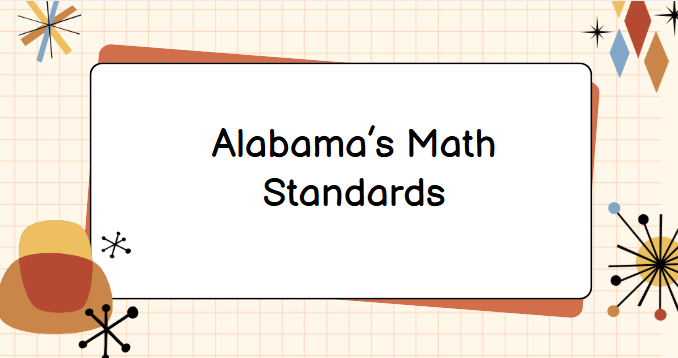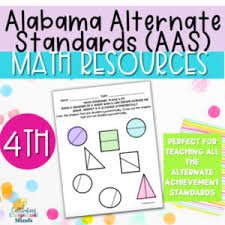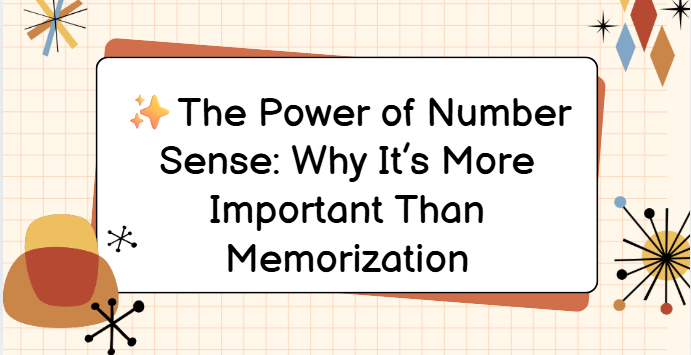
A Deep Dive into Alabama Math Standards and Their Impact on Education
Why Alabama Math Standards Actually Matter (More Than You Think)
Let’s be honest. Most people hear the words “math standards” and immediately think: ugh, boring. But here’s the thing—Alabama Math Standards are doing something different. Something that actually helps students make sense of math, not just memorize it.
We’re not talking about a bunch of rules for teachers to follow. These standards are reshaping how kids learn to think, reason, and use numbers in ways that genuinely make life easier. Whether it’s figuring out a budget, understanding how data works, or solving real-life problems, Alabama’s approach to math is surprisingly down-to-earth.

So, What Are These Standards All About?
Back in the day, Alabama followed Common Core like a lot of other states. But after some time, it became clear that a one-size-fits-all model didn’t really fit Alabama. Educators, parents, and leaders came together to build a system that still had high expectations—but felt more practical, more tailored to real classrooms.
That’s how the Alabama Math Standards came to be. They were rolled out starting in the 2019–2020 school year and are still growing. These standards take the best of what math should be—logical, clear, and connected to life—and put it into a format that actually works for Alabama students.
What’s Actually Taught?
Math in Alabama isn’t just about formulas anymore. The Alabama Math Standards focus on helping students understand why math works, not just how to get the answer. Here’s what that looks like:
🧮 Numbers & Operations
This starts way before algebra shows up. From the earliest grades, students learn to truly understand numbers. It’s about more than just adding and subtracting—it’s understanding how numbers interact, break down, and apply in real-life situations.
🔄 Algebra
It’s not just about solving for x. Kids start building algebraic thinking early on by recognizing patterns and relationships. By the time they get to middle and high school algebra, they’ve already got the mindset to handle it.
📐 Geometry
It starts with recognizing basic shapes but grows into real-world problem-solving—like measuring spaces, building things, or even designing. Geometry becomes more about thinking in pictures and less about memorizing theorems.
📊 Statistics & Probability
We live in a data-saturated world, and Alabama knows that. Students are taught how to read charts, understand trends, and think critically about numbers in the news or on social media. It’s math you actually use.
📈 Functions & Modeling
This is where math and the real world meet. Students learn how to build equations that describe real things—like saving money, planning events, or analyzing business data. It’s hands-on and meaningful.

Why It’s Not Just “School Math” Anymore
This is what sets Alabama Math Standards apart—they’re about life, not just class.
Kids aren’t just being trained to ace a test. They’re learning how to solve problems that will come up in their jobs, in their homes, and in everyday decisions. Math becomes more like a tool in their toolbox rather than a hurdle to graduate.
And when it’s taught this way? Students get it. And they start to enjoy it—yes, enjoy math. Imagine that.
Teachers Aren’t Left in the Dark
One of the best parts? Teachers aren’t just handed a list of goals and told, “figure it out.” Alabama has made sure teachers have actual support. There are training programs, shared resources, and lesson strategies built right into the rollout of the standards.
So the standards aren’t just lofty ideas—they’re doable. And teachers are empowered to bring them to life in real classrooms with real students.
It’s for Every Student—Not Just the Mathletes
This isn’t some elite curriculum only for kids already good at math. The Alabama Math Standards are for everyone. They’re built to help struggling learners grow without leaving behind those who are already excelling.
There’s balance here. Students get multiple chances to grasp key concepts. They can apply what they learn in different ways, and they’re encouraged to think deeply, not just memorize steps. That’s equity in action.
The Bottom Line
Here’s the deal: math is everywhere. From cooking dinner to checking your bank account, math is part of life whether we like it or not.
What Alabama is doing with these math standards is simple but powerful—they’re making sure students can handle life with confidence. Not just because they passed a class, but because they know how to think, solve, and use numbers in a way that makes sense.
And honestly? That matters more than any standardized test ever could.

Our website
Our instagram


